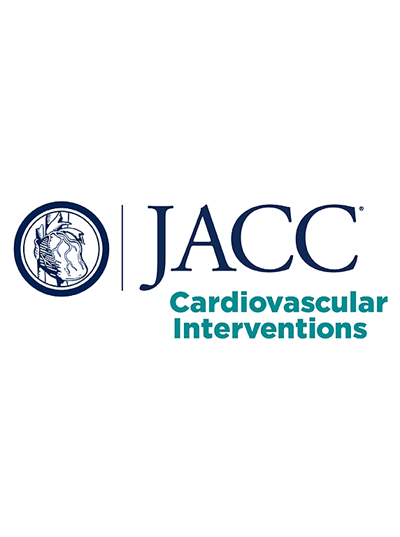Drug-Coated Balloons in the European Registry of Chronic Total Occlusion
IF 11.4
1区 医学
Q1 CARDIAC & CARDIOVASCULAR SYSTEMS
引用次数: 0
Abstract
Background
Drug-coated balloons (DCBs) are increasingly used in percutaneous coronary intervention (PCI). Their application for chronic total occlusions (CTOs) is a promising option to limit stent length in diffuse disease and avoid stent underexpansion and malapposition in negatively remodeled distal vessel segments.
Objectives
The aim of this study was to analyze CTO PCI procedures recorded in ERCTO (European Registry of Chronic Total Occlusion) to investigate frequency of use, patient and lesion characteristics, and in-hospital outcomes of DCBs.
Methods
CTO cases entered into the database from 2016 to 2023 were examined and categorized according to DCB use. DCB-treated patients were further divided into 2 groups: DCBs only and DCBs in association with drug-eluting stents. To minimize the potential impact of confounding factors, 1:1 propensity score matching was applied.
Results
Of 40,449 CTO PCIs performed at 184 centers, DCBs were used in 2,506 (6.2%), increasing from 3.4% (n = 185 of 5,498) in 2016 to 14.9% (n = 705 of 4,722) in 2023. In-hospital complications were infrequent, but DCB-treated CTOs had significantly lower rates of pericardial tamponade (0.1% [n = 2 of 2,506] vs 0.4% [n = 169 of 37,943]; P = 0.006). After propensity score matching, DCB use led to reduced drug-eluting stent length (44.2 ± 36.9 mm [95% CI: 42.7-45.7 mm] vs 58.1 ± 35.9 mm [95% CI: 56.7-59.5] mm; P < 0.001). Contrast volume was lower in the DCB-treated patients (202.4 ± 109.8 mL [95% CI: 198.1-206.7 mL] vs 211.6 ± 123 mL [95% CI: 206.8-216.4 mL]; P = 0.005).
Conclusions
The use of DCBs in CTO recanalization is increasing and is associated with a reduction in the length of stents implanted, as well as a decrease in contrast volume and a lower rate of pericardial tamponade.
药物包覆气球在欧洲慢性全闭塞登记
药物包被球囊(DCBs)在经皮冠状动脉介入治疗(PCI)中的应用越来越广泛。它们在慢性全闭塞(CTOs)中的应用是一种有希望的选择,可以限制弥漫性疾病的支架长度,避免支架在负重构的远端血管段中扩张不足和错位。目的:本研究的目的是分析ERCTO(欧洲慢性全闭塞登记处)记录的CTO PCI手术,以调查dcb的使用频率、患者和病变特征以及住院结果。方法对2016 - 2023年入库的scto病例进行分析,并按DCB使用情况进行分类。dcb治疗的患者进一步分为2组:仅dcb组和dcb联合药物洗脱支架组。为了尽量减少混杂因素的潜在影响,采用1:1的倾向评分匹配。结果在184个中心进行的40449例CTO pci中,使用dcb的有2506例(6.2%),从2016年的3.4%(5498例中n = 185例)增加到2023年的14.9%(4722例中n = 705例)。住院并发症不常见,但dcb治疗的cto心包填塞率显著降低(0.1% [n = 2 / 2506] vs 0.4% [n = 169 / 37,943]; P = 0.006)。倾向评分匹配后,使用DCB导致药物洗脱支架长度缩短(44.2±36.9 mm [95% CI: 42.7-45.7 mm] vs 58.1±35.9 mm [95% CI: 56.7-59.5] mm; P < 0.001)。dcb治疗患者的对比剂体积较低(202.4±109.8 mL [95% CI: 198.1-206.7 mL] vs 211.6±123 mL [95% CI: 206.8-216.4 mL]; P = 0.005)。结论dcb在CTO再通中的应用越来越多,并与植入支架长度的减少、造影剂体积的减少和心包填塞率的降低有关。
本文章由计算机程序翻译,如有差异,请以英文原文为准。
求助全文
约1分钟内获得全文
求助全文
来源期刊

JACC. Cardiovascular interventions
CARDIAC & CARDIOVASCULAR SYSTEMS-
CiteScore
11.60
自引率
8.80%
发文量
756
审稿时长
4-8 weeks
期刊介绍:
JACC: Cardiovascular Interventions is a specialist journal launched by the Journal of the American College of Cardiology (JACC). It covers the entire field of interventional cardiovascular medicine, including cardiac, peripheral, and cerebrovascular interventions. The journal publishes studies that will impact the practice of interventional cardiovascular medicine, including clinical trials, experimental studies, and in-depth discussions by respected experts. To enhance visual understanding, the journal is published both in print and electronically, utilizing the latest technologies.
 求助内容:
求助内容: 应助结果提醒方式:
应助结果提醒方式:


